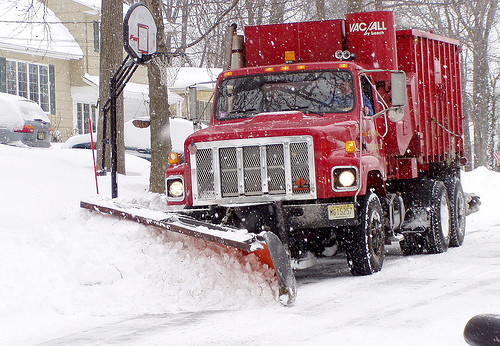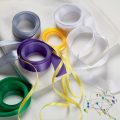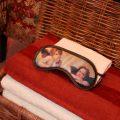 Snow removal technology Having called a smallsnow-removing machine, you can quickly and without much effort to clear the territory. If this option is closer to you, it is worthwhile to understand what distinguishes modern small snow-plows, what features they have and what to look for when choosing them.
Snow removal technology Having called a smallsnow-removing machine, you can quickly and without much effort to clear the territory. If this option is closer to you, it is worthwhile to understand what distinguishes modern small snow-plows, what features they have and what to look for when choosing them.
Engine: electricity or gasoline?
The operating principle of most small (hand-held)The engine of snow blowers is the same: the engine drives the auger rotors, which "grab" snow inside the machine, from where it is thrown out through the funnel a certain distance. This is where the similarities end, and the differences begin. First of all, the engine can be electric or gasoline. The electric one is powered from the network using a cord. The advantage of machines with such an engine is the low price. There are more disadvantages: firstly, relatively low power (3-5 hp); secondly, poor maneuverability, since you have to drag a cord behind you, which catches on uneven surfaces and also loses elasticity in the cold; thirdly, the potential danger arising from the combination of rotating cutters, capable of "biting" the wire, and wet snow. All these disadvantages are absent in units with a gasoline engine, which make up the main group of snow blowers presented on the market. Their power usually varies between 6 and 11 hp. Moreover, it is connected with the width of the snow capture: the more snow the machine "swallows", the more power is needed for the auger rotor to cope with it. And the volume of snow collected affects the productivity of the unit. For example, a 6 hp combine with a snow capture width of 53 cm can process about 33 tons of snow per hour, and an 11 hp combine with a snow capture width of 92 cm - about 70 tons. It should be noted that it is very difficult to calculate the surface area that a snow blower will clear in a certain time, as well as the time that a specific unit will need to clean a given area. It depends on many nuances, in particular on the terrain (will you be clearing a flat area or "weaving" between bushes and flower beds), as well as on the amount and consistency of snow (freshly fallen fluffy, wet, compacted, etc.). Gasoline engines for snow blowers are two- or four-stroke. Two-stroke engines run on a mixture of gasoline and oil, hence the disadvantages of such engines: firstly, in cold weather they have a rather labor-intensive start, since it is directly related to the quality of the prepared mixture; secondly, if you underfill the oil, the engine wears out quickly, if you overfill it, the spark plugs fail; thirdly, if the gasoline-oil mixture is prepared incorrectly, the exhaust is very toxic. Four-stroke engines run on gasoline (oil is poured only into the engine crankcase and is usually changed every 100 hours). Therefore, they have a consistently easy start, their service life is several times higher than that of similarly powerful "two-stroke" engines, they are distinguished by cleaner exhaust (since oil does not get into the combustion chamber), they consume fuel economically and, finally, they make less noise. The recommended gasoline is AI-92 or AI-95. The tank capacity is calculated on average for 1.5 - 2.5 hours of operation on one fill.
Non-self-propelled combines
 Depending on the model, snow removal machinesare divided into those that need to be pushed by hand and those that move independently. Non-self-propelled ones are, as a rule, the lightest (weighing about 40 kg) and low-power (about 6 hp) wheeled units, with a snow capture width of at least 52 - 53 cm and a height of about 30 cm. Usually, controlling them is a simple matter: pull a special cord - the combine starts, press the only lever - the auger rotor starts rotating, release - it stops rotating. You can adjust the direction and distance of snow ejection, but also only manually, by turning a long handle attached to the bell. The "shooting range" is usually no more than 10 m and depends on the amount and quality of snow: it is clear that soft fluffy snow with a layer thickness of 5 cm cannot be "thrown" 10 m. The productivity of units of this class is average, moreover, clearing wet and dense snow with them requires significant physical effort. However, these shortcomings are compensated by the special design of the augers. Most non-self-propelled combines have rubberized edges of metal augers, due to which the service life of the augers increases and the cleaned surface is not damaged, so you can safely clear paving slabs or asphalt paths with the combine. At the same time, it is difficult for a soft edge to cope with compacted snow. All this determines the scope of application of these machines: cottages of permanent residence, where snow is removed as soon as it falls, small courtyards, parking lots, gas stations, etc.
Depending on the model, snow removal machinesare divided into those that need to be pushed by hand and those that move independently. Non-self-propelled ones are, as a rule, the lightest (weighing about 40 kg) and low-power (about 6 hp) wheeled units, with a snow capture width of at least 52 - 53 cm and a height of about 30 cm. Usually, controlling them is a simple matter: pull a special cord - the combine starts, press the only lever - the auger rotor starts rotating, release - it stops rotating. You can adjust the direction and distance of snow ejection, but also only manually, by turning a long handle attached to the bell. The "shooting range" is usually no more than 10 m and depends on the amount and quality of snow: it is clear that soft fluffy snow with a layer thickness of 5 cm cannot be "thrown" 10 m. The productivity of units of this class is average, moreover, clearing wet and dense snow with them requires significant physical effort. However, these shortcomings are compensated by the special design of the augers. Most non-self-propelled combines have rubberized edges of metal augers, due to which the service life of the augers increases and the cleaned surface is not damaged, so you can safely clear paving slabs or asphalt paths with the combine. At the same time, it is difficult for a soft edge to cope with compacted snow. All this determines the scope of application of these machines: cottages of permanent residence, where snow is removed as soon as it falls, small courtyards, parking lots, gas stations, etc.
Self-propelled combines
They are equipped with a drive on wheels or tracks.Snow blowers on wheels maneuver well, but can slip in deep snow, despite the fairly large diameter of the wheels and profiled tires. Tracked units are less maneuverable, but they are capable of overcoming snowdrifts of any height, since they cling to the snow better. The question of choosing the right model is solved here as follows: if there are bushes, flower beds, small architectural forms on the site, if you often have to go around corners, then you need to buy a wheeled machine, but if you need to clear a large area with a fairly flat relief - a tracked one. I will add that the wheels and tracks are made of high-strength rubber, which practically does not wear out when in contact with snow. Unlike non-self-propelled ones, the majority of self-propelled combines have a separate snow-grip system: augers are in front, and then a high-speed rotor independent of them. The augers crush the snow, the rotor throws it out. There are several advantages of such a design. Firstly, the snow "flight" range increases to 14-18 m. Secondly, the scope of application of the combine is expanded: it can handle even dense (settled, compacted) snow. The special design of the augers helps to "bite" into snowdrifts and "digest" them: they are completely metal (not rubberized), and on models with a capacity of 7 hp and more, they also have teeth. "Toothy" snow blowers are capable of very compacted snow. However, such augers also have a disadvantage: they can no longer touch the surface, as is the case with non-self-propelled models. to avoid damage to it and breakage of the augers themselves (only the scraper for picking up compacted snow touches the ground - this is the lowest part of the snow gripper). There are even special stops (skis) that provide a gap between the augers and the surface. At the same time, the gap can be adjusted within 2 to 4 cm: if you are clearing asphalt, make it larger, if tiles - smaller. Please note: despite the presence of a scraper, the snow blower is not an ice pick, so you should not knock down ice with it, otherwise you will damage the combine.









